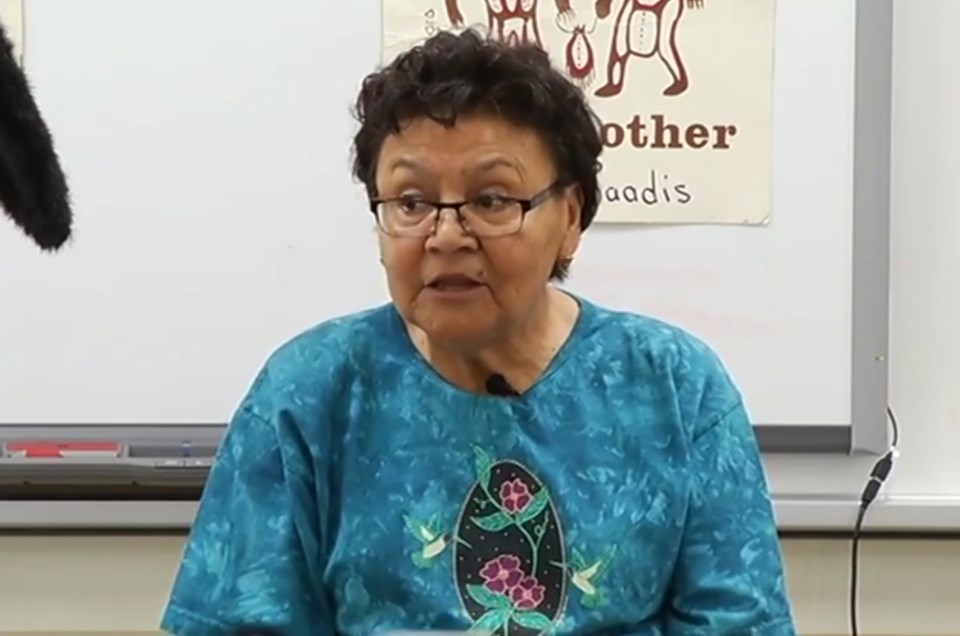If Ojibwe language instructor Barbara Nolan had it her way, she would build a stronghold for her language — somewhere on a lake, preferably — where people could go and be completely immersed in Anishinaabemowin with the goal of becoming fluent speakers.
“That’s the vision: I’m going to win $10 million and I’m going to build it, and I’ll create the speakers,” Nolan said with a laugh. “It can be done, but you need the money.”
Witnesses who testified at a parliamentary committee earlier this week told committee members that if the federal government is serious about revitalizing Indigenous languages, it must provide better funding.
The 2019 federal budget provided $333.7 million over five years and $115.7 million in ongoing funding to support the implementation of the Indigenous Languages Act.
But for Nolan, who was named language commissioner for the Anishinabek Nation in 2020, the funding “is not going to be enough” to revitalize and strengthen Indigenous languages in Canada.
“Sometimes I think that’s what the government wants — they don’t want us to create speakers,” she said. “I mean, they took our language away, why should they give it back to us? That’s what I’m thinking.”
Nolan is the only fluent speaker currently teaching at the Garden River Child Care Centre. She teaches four hours of language instruction to children each day, splitting her time between four classes.
Nolan would like to see the daycare facility with at least three fluent speakers, but she says that fluent speakers are hard to come by these days.
“We have to create speakers if our language is going to stay alive,” she said. “We can’t be creating people that can only read and write.”
One of the major roadblocks is the short-term, temporary nature of funding available for Indigenous language programming, says John-Paul Chalykoff, an Anishinaabemowin professor at Shingwauk Kinoomaage Gaming.
“A lot of the language funding I feel is grant based, so you’re lucky to have a year-long program,” he said, adding that the language funding he received while teaching in his own community of Michipicoten First Nation was only good for a year. “Michipicoten essentially went dormant because they didn’t have a grant to continue the program beyond a year, and I feel like that’s a struggle in a lot of communities.
“A lot of communities struggle with capacity to constantly stay on top of these grants. It’s time consuming.”
Nolan says it’s also tough to recruit fluent speakers to teach Indigenous languages.
“It’s hard to get fluent speakers that happen to be teachers, or teachers that happen to be fluent speakers. It’s hard to find them,” she said. “People don’t want to move. There’s lots of people in Wikwemikong — back in Wiky, there’s lots of fluent speakers over there. But they don’t want to move.
“I’d like to go over there and just shake them up," Nolan said of her home community on Manitoulin Island. "They don’t know what gift they have, being a fluent speaker.”
Nolan and Chalykoff both agree that Indigenous communities should have that same dedicated stream of sustainable funding as French immersion programming in order to cover the cost of implementing Indigenous language immersion schools in Canada.
“To me, that would be the dream; that they dedicate funding to immersion schools and proper training for teachers, for both first-language speakers and dedicated training to train second-language speakers,” Chalykoff said.
“It has to be total immersion, and the students or participants will have to take a leave from their jobs or quit, and we have to put them on a salary,” said Nolan.
The funding is needed more than ever, Chalykoff says, given the fact that many people fluent in Indigenous languages are now in their senior years.
“It’s kind of unfair to the elders to expect them to still carry the burden of teaching in the classroom when they’re in their 70s,” he said.
Meanwhile, Nolan hopes to keep on teaching the language for another two decades, which would place her squarely in her 90s. But she hopes that a new generation of fluent speakers will be created in order to keep Anishinaabemowin alive.
“The time is now. It’s crucial — the speakers we have, they’re all passing away,” Nolan said.
